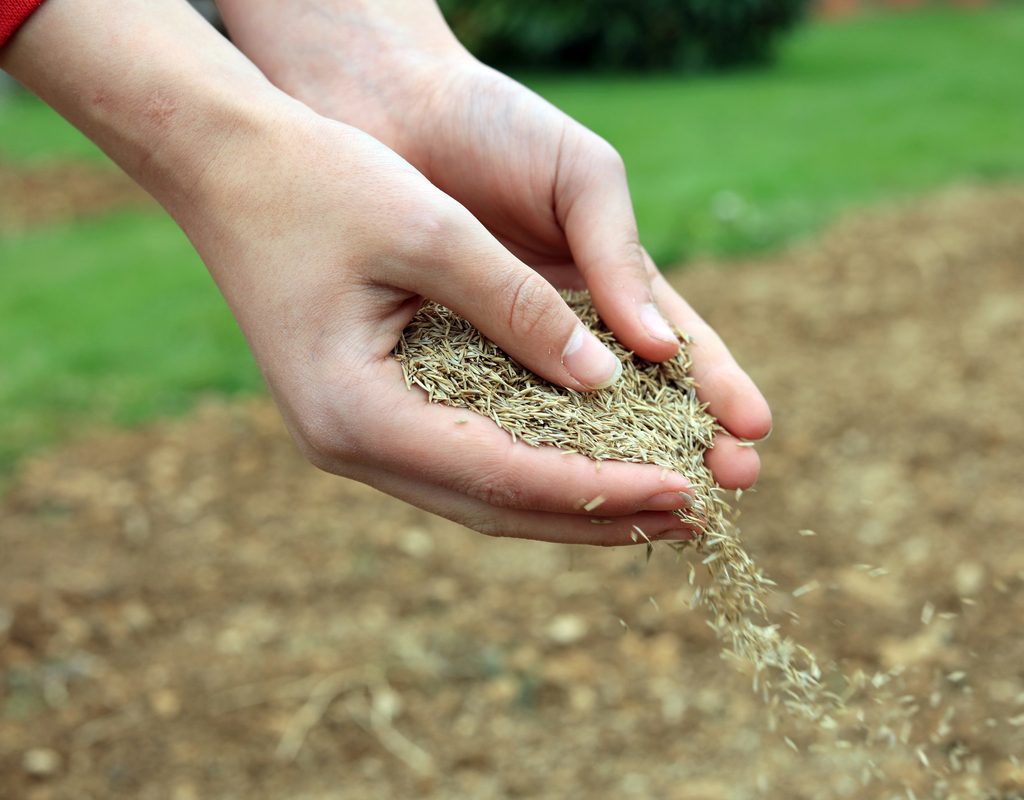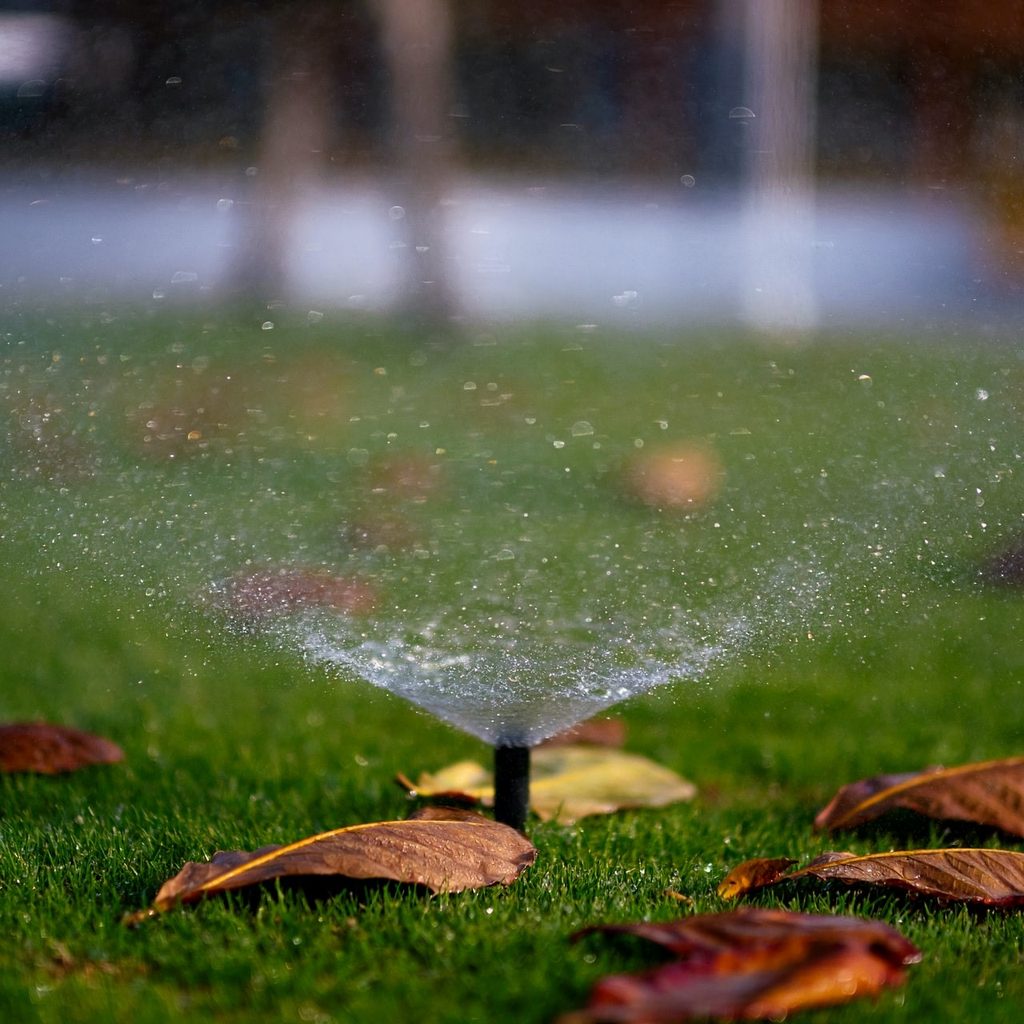No matter how thick and lush your lawn is, eventually it will need to be reseeded and watered-in, which can be tricky. As annoying as it can be we think it would be less annoying if you had an easy-to-follow, comprehensive guide to watering your grass seed. In this article, we’ll cover everything you need to know about watering your grass seed from how much to water it and how often, to which varieties need less water, and even some tips on watering your grass seed during a water advisory.
How much water does grass seed need?
The exact amount of water you’ll need depends on the type of soil you have and size of your yard. You want roughly the top two inches of your soil to be moist but not soggy. On average, this takes only a few minutes of watering to achieve.
A good way to tell how much water your yard will need per watering is to find how much water it takes to moisten one square foot of your yard and multiply that by the total square footage of your yard. This can be helpful if you’re looking to cut down on water waste, but it isn’t strictly necessary. After watering your seeds a few times, you’ll develop a sense of how long it takes without the need for experimentation.

How often should you water your grass and grass seed?
Water your soil before spreading your grass seed. After seeding, water seed twice a day in mild climates (except on rainy days). It’s best to water them in the early morning and midafternoon. Avoid watering your lawn during the hottest part of the day or near sunset to prevent sunburnt plants and fungal infections.
In hotter, drier, climates you may need to water more often. If your seeds dry out completely there is a risk of them dying, going dormant, being blown away in the wind, or being eaten by birds. Keeping them moist allows them to root more quickly, which keeps them safe. Three times a day — once in the early morning, once in the late morning, and once in the mid-afternoon — is the best watering schedule for hotter climates.
What grass varieties need the least water?
Grass seeds all require roughly the same amount of water until they grow to about two inches tall. Once they’re tall enough, you can switch to an adult grass watering schedule. Fully grown grass only needs an inch or two of water each week, meaning it takes less water than seeds. There are two approaches you can take from here. Grass that germinates quickly will require less water since it will spend less time as moisture-loving seeds. You can also look for grasses that are more drought tolerant, since these will use less water over the course of their lifespan.
Some of the quickest growing grasses are ryegrasses and tall fescue, while drought tolerant grasses include fescues, buffalo grass, bermuda grass, and St. Augustine grass. The overlap between these two lists, tall fescue, is likely your best bet for overall water conservation.

How to water grass seed during a drought
If your area is in the midst of a water advisory, then using fresh water on your lawn isn’t the best idea. Luckily, there are some great options to keep your lawn growing without contributing to water shortages. Rain barrels are one such option. While you won’t be collecting any rain during a drought, if you set them out well in advance you can collect water throughout the year and be prepared if a water shortage ever occurs.
If you don’t have rain barrels, though, or if you use all the water in them before the end of the drought, you can reuse water. Water that’s been used for cooking, especially water that has been boiled, is great for watering your lawn. Just don’t use it while it’s still hot. Water that was used for cleaning or bathing is a potential option, but it depends on what soaps or cleaning liquids may have been added to it. If you aren’t sure if the soaps you used are OK to put into the soil, it’s best not to use it on your lawn.
Whether you’re growing an entirely new lawn from scratch or just looking to fill in a few patches, you have everything you need for a successful seeding. Be careful not to wash them away, and remember that your soil should be moist but not muddy. Choose a faster growing grass variety if you’re looking to use less water, and you can always reuse water that hasn’t been contaminated with chemicals to water your grass during a drought. By following these simple steps, anyone can grow a healthy, luscious lawn that’ll be sure to impress.


